Parakeets, also known as budgerigars, are small and vibrant birds that make popular pets. One important aspect of a parakeet’s health is the condition of its cere, which is the fleshy area above its beak. The cere can encounter various problems, and being aware of these issues is crucial for every parakeet owner.
Some common parakeet cere problems are cere discoloration, prolapse, and tumor. Other issues include swelling, infection, and cere pecking. In this article, we will discuss the common parakeet cere problems and provide insights into how to prevent them.
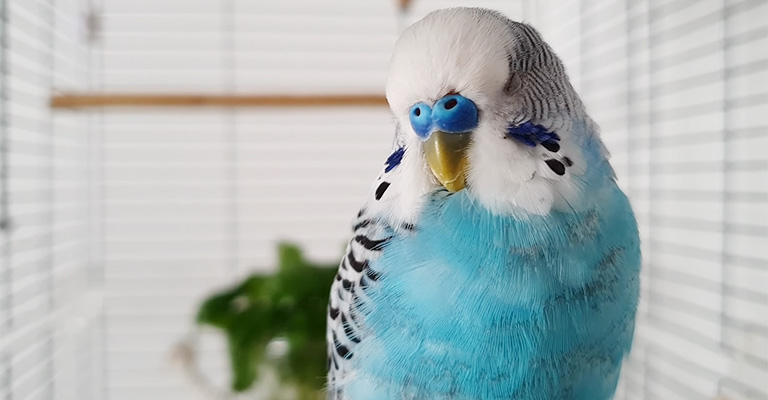
What Are the Common Cere Problems in Parakeets?
From swelling to tumors, parakeets can have many different types of cere problems. Whenever you observe any abnormality in your parakeet’s cere, it’s advisable to consult a qualified avian veterinarian for an accurate diagnosis and appropriate treatment. Here are the common cere issues-
Cere Discoloration
One common cere problem in parakeets is discoloration. The cere can turn crusty, flaky, or change color, indicating an underlying issue. A healthy cere is typically smooth, unblemished, and has a consistent color.
Cere Prolapse
Cere prolapse occurs when the tissue of the cere protrudes abnormally. It can be caused by injuries, vitamin deficiencies, or hormonal imbalances. Prolapse requires immediate veterinary attention to prevent further complications.
Cere Tumors
Tumors can develop in the cere of parakeets, leading to growths that affect their health. These growths can be benign or malignant, and prompt veterinary diagnosis is necessary to determine the appropriate treatment.
Cere Infections
Infections, often caused by bacterial or fungal agents, can affect the cere in parakeets. Symptoms may include swelling, discharge, and redness. Prompt treatment with antibiotics or antifungal medication is crucial to prevent the infection from spreading.
Cere Pecking
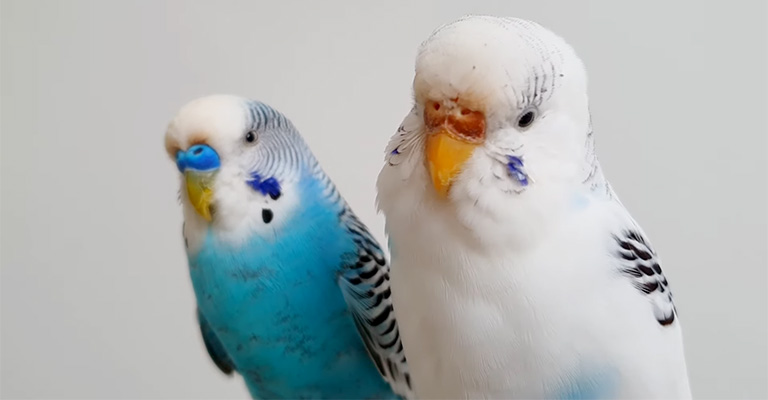
Parakeets may engage in excessive grooming or pecking at their cere due to stress or boredom. This behavior can lead to injuries, bleeding, and the development of sores. Identifying and addressing the underlying cause is vital to prevent further damage.
Cere Scabs
Scabs on the cere can be indicative of injuries, infections, or allergies. It is essential to observe the parakeet’s behavior and consult a veterinarian to determine the underlying cause and provide appropriate treatment.
Cere Swelling
Swelling of the cere can occur due to various reasons, such as trauma, hormonal imbalances, or tumors. Timely veterinary intervention is necessary to identify the cause and initiate appropriate treatment.
Cere Dryness
Dryness of the cere can lead to cracking and discomfort for the parakeet. It can be caused by environmental factors, inadequate nutrition, or dehydration. Ensuring a well-balanced diet and providing a suitable environment with proper humidity levels can help prevent this problem.
How to Prevent Parakeet Cere Issues?
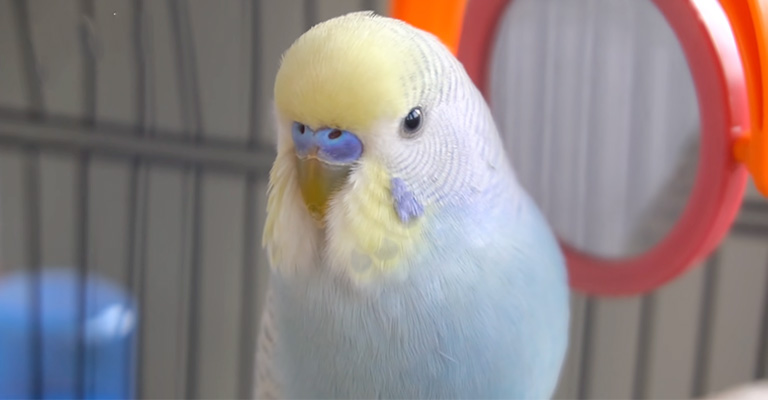
Preventing cere problems in parakeets requires diligent care and attention from the owners. Here are some essential preventive measures to follow:
Provide a Balanced Diet
A well-balanced diet is crucial for the overall health of a parakeet. Ensure their diet includes fresh fruits, vegetables, high-quality seeds, and pellets. Proper nutrition helps maintain a healthy cere.
Clean Living Environment
Keep the parakeet’s living space clean and hygienic. Regularly clean the cage, food and water bowls, and perches to prevent the accumulation of bacteria or fungi that can cause cere infections.
Avoid Toxic Substances
Keep harmful substances, such as chemicals, aerosols, and toxic plants, away from the parakeet’s environment. Inhalation or ingestion of toxic substances can have adverse effects on their cere and overall health.
Regular Vet Check-Ups
Schedule regular check-ups with an avian veterinarian to monitor your parakeet’s health. Routine examinations can help detect cere problems at an early stage and prevent them from progressing.
Environmental Enrichment
Provide ample opportunities for mental stimulation and physical exercise for your parakeet. Toys, perches, and interactive playtime help prevent boredom and excessive cere grooming.
Monitor Hormonal Changes
Keep a close eye on your parakeet’s hormonal changes, especially during breeding seasons. Hormonal imbalances can contribute to cere problems, and consulting a veterinarian can provide guidance on managing these fluctuations.
Prevent Injuries
Ensure the parakeet’s environment is safe and free from hazards that could lead to injuries. Sharp objects or rough perches can cause damage to the cere, so it’s important to provide appropriate accessories.
Hydration
Make sure your parakeet has access to fresh and clean water at all times. Proper hydration helps maintain the health and moisture of the cere.
Why Does The Parakeet Cere Change Color?
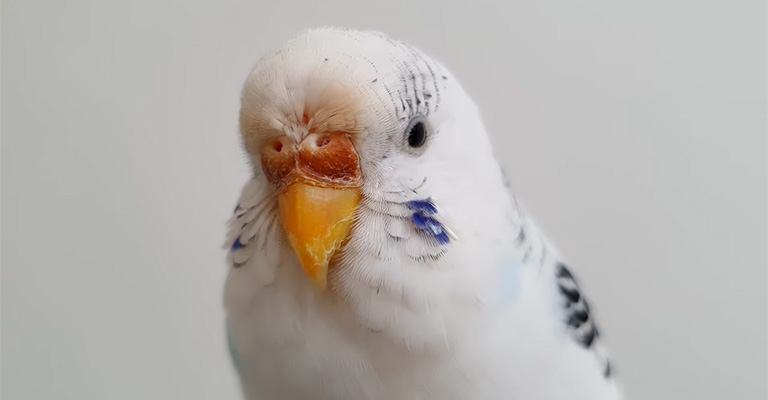
The color change in a parakeet’s cere can be a cause for concern for many owners. Several factors can contribute to this phenomenon. Here are six common reasons why a parakeet’s cere may change color:
Sexual Maturity
Parakeets undergo hormonal changes as they reach sexual maturity. The cere color can differ between males and females. Males typically have a blue cere, while females have a pink or brown cere.
Breeding Season
During breeding season, hormonal fluctuations can cause temporary changes in the cere’s color. Males’ ceres may become brighter and more vibrant, while females’ ceres can become darker.
Aging
As parakeets age, their cere color may change. Older parakeets may exhibit faded or paler ceres compared to their younger counterparts.
Environmental Factors
Factors such as lighting, temperature, and diet can impact the color of a parakeet’s cere. For example, exposure to UV light can intensify the blue color in males.
Nutritional Deficiencies
Inadequate nutrition, particularly deficiencies in certain vitamins and minerals, can affect the color of the cere. A well-balanced diet is essential for maintaining a healthy and vibrant cere color.
Health Issues
Certain health conditions, such as infections, tumors, or hormonal imbalances, can cause abnormal color changes in the cere. If you notice sudden or drastic color changes, it is crucial to seek veterinary advice to rule out any underlying health problems.
How to Tell If My Parakeet’s Cere Is Irritated?
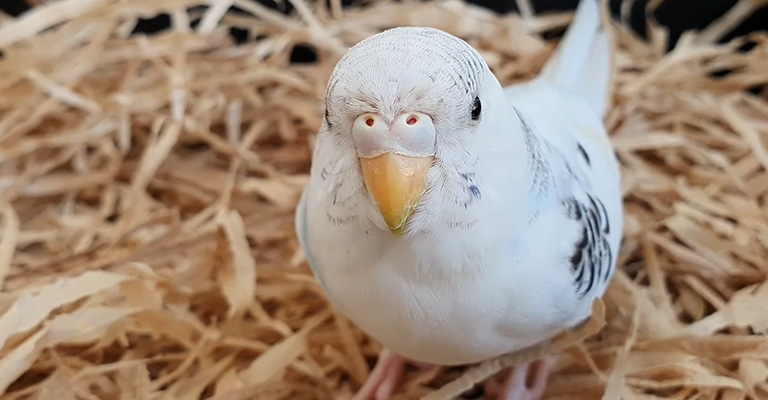
Irritation of the cere in parakeets can manifest through various signs and symptoms. Here are some common indicators that your parakeet’s cere may be irritated:
Discoloration
- The cere, the fleshy area above the beak, may appear redder than usual.
- It may sometimes become swollen or have a dark, inflamed appearance.
Excessive Scratching
- An irritated cere may cause your parakeet to scratch or rub the area frequently.
- The bird may use its feet or beak to alleviate the discomfort.
Discharge or Buildup
- An irritated cere may result in the production of excessive discharge or crusty buildup on the surface.
- The discharge can vary in color, ranging from clear to white, yellow, or greenish.
Behavioral Changes
- Your parakeet might exhibit behavioral changes if its cere is irritated.
- It may appear more agitated, restless, or irritable than usual.
- The bird may also exhibit decreased appetite or show signs of discomfort while eating.
Feather Plucking
- Occasionally, a parakeet with an irritated cere may engage in feather plucking.
- The bird may try to alleviate the discomfort by pulling out feathers from its body.
Excessive Sneezing or Nasal Discharge
- If the irritation extends beyond the cere and affects the respiratory system, you may observe frequent sneezing or nasal discharge.
- The discharge may be clear, cloudy, or discolored.
FAQs
It is not recommended to use over-the-counter ointments or medications without consulting a veterinarian. Parakeets have unique physiological characteristics, and some substances may be toxic or harmful to them. A veterinarian can prescribe safe and effective treatments for your parakeet’s specific condition.
Excessive pecking at the cere can be a sign of stress or boredom. Providing environmental enrichment, such as toys, perches, and interactive playtime, can help alleviate boredom and redirect your parakeet’s attention. Identifying and addressing the underlying cause of stress is also important to prevent this behavior.
Yes, it is normal for a parakeet’s cere to change color. Males and females have different natural cere colors, and hormonal changes, aging, and environmental factors can also contribute to color variations. However, sudden or drastic color changes should be monitored and evaluated by a veterinarian.
Parakeets typically groom themselves, including cleaning their cere. However, if you notice any abnormalities, such as discharge, crustiness, or scabs, it is important to monitor and clean the cere as necessary. Use a gentle and safe method, such as a damp cloth, to clean the area without causing further irritation.
Certain cere problems, such as infections, can be contagious among birds. It is important to isolate an affected parakeet and consult a veterinarian to prevent the spread of the condition. Good hygiene practices, such as regular cleaning of cages and disinfecting shared items, can help minimize the risk of transmission.
Final Words
That was all about parakeet cere problems. Taking care of your parakeet’s cere is essential for its overall health and well-being.
By understanding the common cere problems in parakeets and implementing preventive measures, you can help ensure a healthy cere and a happy bird.
Regular veterinary check-ups, a balanced diet, clean living environment, and attentive observation are key to preventing cere problems and addressing them promptly if they arise.
Remember to seek professional advice if you notice any abnormalities or signs of irritation in your parakeet’s cere.
With proper care, you can maintain a vibrant and healthy cere for your beloved feathered companion.